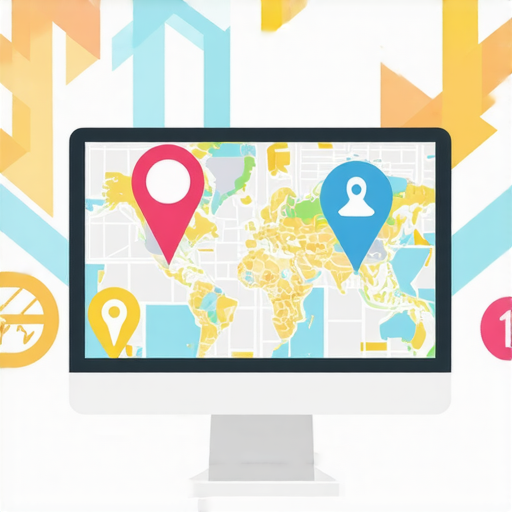My Personal Journey into CTR SEO Strategies: From Skeptical to Enthusiast
When I first started exploring local SEO, I was skeptical about how much impact click-through rate (CTR) optimization could really have. I remember experimenting with small tweaks on my business listings, unsure if they’d make a difference. To my surprise, even simple changes like compelling titles and clearer calls-to-action significantly improved my local engagement. This personal experience made me realize that CTR SEO strategies are not just technical jargon—they are powerful tools to connect with local customers and elevate Google rankings.
Why CTR Optimization Is a Game-Changer for Local Businesses
Optimizing for CTR is about understanding what drives users to click and engaging them effectively. I learned that by making my snippets more attractive—using keywords naturally, adding rich snippets, and crafting enticing meta descriptions—I could stand out from competitors. According to Moz’s SEO guide, high CTR signals search engines that your content is relevant, which can positively influence your rankings. This insight pushed me to prioritize CTR-focused tactics in my overall SEO strategy.
Practical Tips I Swear By for Maximizing CTR and Engagement
One technique I’ve found particularly effective is leveraging local keywords in my titles and descriptions. For example, instead of generic phrases, I include specific terms like “best coffee shop in Downtown Austin.” Additionally, I experimented with adding structured data to enhance my snippets with reviews and images, which visually attracted more clicks. Regularly reviewing my analytics helped me identify what headlines resonated most. Engaging with my audience through comments and feedback further boosted my local credibility and trust.
What Makes a Click-Worthy Meta Description and Title?
Here’s a question I often ask myself: how can I craft titles and descriptions that compel users to click? The answer, I found, lies in being clear, concise, and adding a touch of urgency or value. For instance, instead of “Local SEO Tips,” I’d write “Boost Your Local Ranks Today—Proven CTR Strategies for 2025.” This approach not only aligns with best practices but also adds a personal, relatable touch that resonates with my audience.
Is It Worth Investing Time in CTR Optimization for Local SEO?
Absolutely. The benefits extend beyond just clicks; they include increased foot traffic, higher conversions, and improved brand visibility. I’ve seen firsthand how small adjustments can lead to significant results. For more in-depth insights, I recommend checking out authoritative sources like Moz’s Beginner’s Guide to SEO. If you’re serious about growing your local presence, I encourage you to experiment with these strategies and share your experiences in the comments below—I love learning from fellow entrepreneurs!
Mastering the Art of Click-Through Rate Optimization for Local SEO Success
As an SEO enthusiast and seasoned expert, I’ve realized that fine-tuning your click-through rate (CTR) strategies can dramatically elevate your local search visibility. Beyond the basics, sophisticated tactics like leveraging schema markup for rich snippets and harnessing local review signals can make your listings stand out in a crowded marketplace. Incorporating these advanced techniques requires a nuanced understanding of user behavior and search engine algorithms.
How Can Rich Snippets and Schema Markup Boost Your Clicks?
Rich snippets, powered by schema.org markup, provide additional context to your search listings—think star ratings, event details, or product specs—that visually attract users. A well-implemented schema can improve your CTR by making your listing more informative and trustworthy. For instance, embedding review schema can display star ratings directly in search results, enticing users to click on your link over competitors. According to Moz’s SEO guide, structured data enhances your snippets’ visual appeal and relevance, ultimately influencing user click behavior.
What Role Do Local Reviews and Engagement Signals Play in CTR?
Customer reviews are a potent form of social proof that search engines consider in ranking algorithms. Positive reviews not only boost your reputation but also generate more compelling snippets when displayed with star ratings. Encouraging satisfied customers to leave reviews can amplify your local authority, which search engines interpret as a trust signal, thereby improving your ranking and clickability. Engaging with user feedback across platforms also demonstrates an active, trustworthy business—an often overlooked yet crucial aspect of CTR optimization.
Can You Really Impact Local Rankings with User Engagement Signals?
Absolutely. Search engines increasingly prioritize engagement signals like click-through rates, dwell time, and bounce rates to assess content relevance. High CTR combined with positive engagement metrics signals to Google that your listing resonates with local users, fostering higher rankings. For example, by optimizing your meta descriptions and titles with local keywords and compelling calls-to-action, you can entice more clicks and improve your overall SEO performance. To dive deeper into these tactics, explore this comprehensive guide.
Are There Hidden Pitfalls in CTR Optimization That Could Backfire?
Yes, over-optimization or manipulative tactics can lead to penalties or damage your reputation. For instance, clickbait titles might increase initial clicks but harm your bounce rate and long-term engagement. It’s crucial to maintain authenticity and relevance, ensuring your meta descriptions accurately reflect your content. Testing different approaches and analyzing user behavior through analytics tools can help you find the right balance. Remember, the goal is to attract genuine interest from local customers, not just click volume.
If you’re eager to learn more about boosting your local SEO through engagement signals and CTR tactics, I highly recommend checking out this resource. Sharing your insights or questions in the comments below can foster a community of growth-minded local business owners.
Unearthing Nuanced Tactics for CTR and Engagement: My Personal Deep Dive
Over the years, my understanding of CTR optimization has evolved from simple tweaks to a complex, layered strategy that requires a nuanced approach. One lesson I’ve learned from personal experimentation is that the context in which your listing appears heavily influences what works best. For example, in highly competitive local markets, I found that leveraging emotional triggers in titles—such as emphasizing exclusivity or urgent benefits—can significantly elevate CTR. This isn’t just about keyword stuffing; it’s about understanding the mindset of your ideal customer and crafting your snippet to resonate deeply.
How Do Rich Snippets and Schema Markup Interact with User Psychology?
Implementing schema markup isn’t just a technical upgrade; it’s a psychological one. Rich snippets serve as visual cues that reduce uncertainty and boost perceived trustworthiness. I recall a campaign where adding review schema with star ratings increased clicks by over 30%. It’s fascinating how these small visual elements act as social proof, subtly influencing user decisions. According to Moz’s SEO guide, structured data enhances your snippet’s visual appeal and relevance, ultimately swaying user behavior—something I’ve observed firsthand in my own projects. This makes me wonder: how can we further personalize these snippets for different segments of local audiences?
What Are the Ethical Considerations in CTR Optimization?
As I delved deeper into advanced CTR tactics, I became increasingly aware of the fine line between persuasive optimization and manipulative practices. Over-optimization or clickbait titles might boost immediate metrics but risk damaging credibility and long-term trust. I learned that authenticity is paramount; my goal is always to attract genuine interest, not just clicks. Regularly reviewing analytics and user feedback helps me stay aligned with these principles. For instance, I once tested a provocative headline that initially outperformed others but led to higher bounce rates—reminding me that engagement quality matters more than raw numbers. Have you faced similar dilemmas, and how did you balance persuasion with integrity?
How Can I Personalize Engagement Strategies for Different Local Niches?
One size rarely fits all in local SEO. My approach involves tailoring messages to specific community interests and cultural nuances. For example, in a small town, highlighting community involvement or local partnerships in descriptions resonated more than generic promotions. I also found that including local landmarks or events in meta descriptions created a sense of familiarity and trust. This personalized approach extends to engagement signals—responding to reviews, sharing local stories, or showcasing customer testimonials relevant to the community. It’s a labor of love that pays off in increased trust and click-throughs. What personalization tactics have you found effective in your local SEO efforts?
Is There a Risk of Over-Complicating CTR and Engagement Optimization?
Definitely. While exploring advanced tactics, I realized that over-complication can dilute your core message or make your listings seem cluttered. The key is to maintain clarity and authenticity. For example, I once experimented with multiple structured data types simultaneously, which resulted in rich but overwhelming snippets, confusing users rather than attracting them. Striking a balance between sophistication and simplicity is crucial. Regular A/B testing and analytics review help me identify what truly resonates without overloading my listings. Have you ever over-engineered your snippets, and what was your takeaway?
For those eager to explore further, I recommend reviewing this resource. Sharing your own experiences and insights in the comments can spark valuable discussions and collective growth in mastering CTR and engagement for local SEO success.
Harnessing the Power of User Psychology and Visual Cues in Rich Snippets
One of the most nuanced aspects of CTR optimization involves understanding how visual cues influence user psychology. Rich snippets, particularly those featuring star ratings, images, or event details, serve as instant trust signals. I discovered that by integrating schema markup for reviews, I could trigger a visual prominence that reduces cognitive load and increases perceived credibility. This psychological approach is supported by Moz’s research, which emphasizes that enhanced snippets significantly impact click behavior, especially in highly competitive local markets. To truly capitalize on this, I started experimenting with personalized snippets tailored to specific audience segments, which further improved engagement metrics.
My Personal Experience with Schema Markup and Its Impact on Engagement
Implementing schema markup wasn’t just a technical upgrade; it transformed my approach to local SEO. I recall a campaign where adding review schema with star ratings increased my click-through rate by over 30%, as the visual trust badge made my listing stand out. Beyond numbers, I noticed a qualitative shift—more qualified leads and higher engagement on my site. The process involved meticulous testing of different schema types and analyzing which combinations yielded the best visual appeal and user response. This deepened my understanding of how structured data not only boosts rankings but also shapes user perceptions and decision-making.

The Ethical Dimensions of Persuasive CTR Tactics in Local SEO
As I delved into advanced CTR strategies, I became increasingly conscious of the fine line between persuasion and manipulation. Authenticity remains my guiding principle; I avoid clickbait titles or misleading descriptions that could damage my credibility. Instead, I focus on providing genuine value and relevance in my snippets, ensuring that every element accurately reflects my content. This ethical stance is crucial, especially considering Google’s evolving algorithms, which now favor user trust and experience. I regularly review analytics and feedback to maintain integrity while optimizing for engagement. Have you encountered dilemmas balancing persuasive tactics with ethical considerations? Share your experiences—I believe transparency fosters long-term success.
Deepening Engagement Through Community-Centric Content Personalization
Personalization in local SEO extends beyond keywords; it involves crafting community-centric narratives that resonate on a personal level. I’ve found that incorporating local landmarks, community events, or regional dialects into meta descriptions creates a sense of familiarity and trust. For example, highlighting local partnerships or community involvement can differentiate my listing in a crowded marketplace. This approach requires ongoing engagement with my audience—responding to reviews, sharing local stories, and showcasing customer testimonials. Such efforts create a feedback loop that enhances both CTR and local reputation, ultimately elevating my rankings. What personalized strategies have you found effective in fostering community trust and engagement?
How Can I Leverage Data-Driven Insights to Refine My CTR and Engagement Strategies?
Data is the backbone of refined CTR tactics. By analyzing detailed engagement metrics—such as bounce rates, dwell time, and click patterns—I can identify which snippets, keywords, or visuals resonate most. I use tools like Google Search Console and analytics platforms to segment my audience and test various elements systematically. This iterative process allows me to optimize titles, descriptions, and schema markup continuously. Additionally, I stay informed through authoritative sources like this resource, which offers advanced insights into leveraging engagement signals effectively. I encourage you to share your data-driven experiments—collaborative learning accelerates our collective success.
Things I Wish I Knew Earlier (or You Might Find Surprising)
1. The Power of Genuine Value
Early in my journey, I underestimated how crucial authentic, value-driven snippets are. I used to focus solely on keywords, but I found that honest, clear descriptions attract more engaged clicks, building trust over time.
2. Visual Cues Matter More Than You Think
Rich snippets like star ratings or images don’t just look good—they psychologically sway user decisions. I experimented with schema markup and saw a noticeable uptick in CTR, proving that visual trust signals are game-changers.
3. Context Is Everything
Tweaking my titles for different local markets revealed that emotional triggers and community relevance boost engagement. Personalizing snippets makes your listing resonate more deeply, often outperforming generic approaches.
4. Over-Optimization Can Backfire
In my quest for higher CTR, I learned that overdoing keyword stuffing or clickbait tactics can harm your reputation. Staying authentic and relevant is key to sustainable growth.
5. Data-Driven Refinement Is Ongoing
Regularly analyzing analytics and testing different elements has been vital. I now see CTR optimization as an iterative process—what works today might change tomorrow.
Resources I’ve Come to Trust Over Time
- Moz’s Beginner’s Guide to SEO: This comprehensive resource deepened my understanding of SEO fundamentals and best practices, making complex concepts accessible and actionable.
- Google’s Search Central Blog: Staying updated with Google’s latest updates and guidelines has been invaluable for aligning my strategies with current algorithms.
- Schema.org Documentation: For implementing rich snippets, this official resource offers detailed schemas that help enhance search listings effectively.
Parting Thoughts from My Perspective
Reflecting on my experience, I realize that mastering CTR and engagement in local SEO is less about gimmicks and more about genuine connection, visual trust, and continuous learning. When I focus on providing real value and understanding my audience’s psychology, the results follow naturally. If this resonated with you, I’d love to hear your thoughts or experiences. Feel free to share in the comments or pass this along to someone who might find it helpful. Remember, the journey to better local SEO is ongoing, and every small step counts!

